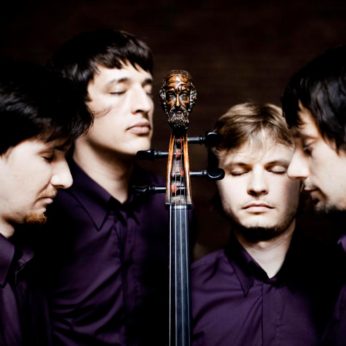During the Great Patriotic War against Hitler, Stalin had loosened somewhat the shackles that restrained the Soviet artists. Musicians and even writers were evacuated to safe areas to make their contributions. Shostakovich’s massive Leningrad Symphony became the stuff of legend and its worldwide performances generated huge radio audiences. Stalin was only too aware of the propaganda value of Shostakovich.
Nonetheless with the War over the internal persecution of artists and intelligentsia was revived under the enthusiastic leadership of Stalin’s ideological watchdog, Andrey Zhdanov. It began in 1946 with the renewed hounding of Anna Akhmatova and culminated in the denunciation of Shostakovich, Myaskovsky, Khachaturian, Shebalin and Prokofiev in 1948. Shostakovich lost his teaching job at the Conservatoire, performances of his published works except the Fifth and Seventh Symphonies were banned and he was reduced to writing film music in order to survive. When Stalin personally insisted that Shostakovich lead the Soviet delegation to the Cultural and Scientific Conference for World Peace in New York his material situation improved somewhat, though not sufficiently to allow performances of either his song cycle From Jewish Folk Poetry or his Fourth Quartet. However his Song of the Forests won him a Stalin Prize.
The story goes that while Shostakovich was in New York he heard the Juillard Quartet play Bartók’s First, Fourth and Sixth Quartets. Seemingly he was very taken with the tumultuous Sixth Quartet, written after Bartók’s mother died, and this inspired him to start his next quartet.
The Fourth Quartet is music of great beauty and greater sorrow that would grip you by the heart even if you had no idea of the composer’s circumstances. The opening theme suggests the open spaces and clear Nordic air of Sibelius. Rather like the Third Quartet, which begins with a passable imitation of Haydn that gradually disintegrates as the movement progresses, so here the freshness of the opening theme slowly takes on the complexities and compromises of Soviet life with much nostalgia for what was or might have been.
The grief in the Andantino is more personal and immediate, evoking a side of Shostakovich that will reappear constantly in his later quartets. The first thirty bars are given to the trio of upper strings, making a dramatic moment of the cello’s entry. The music now flowers into a devastating climax before finding its way back to the elegiac opening and the muted restoration of the trio. There is an exquisite coda that looks back to the first movement.
The Scherzo is more of Shostakovich’s black humour and hints of Mendelssohn are now of course blatantly subversive. It is a delicate movement, unlike some of his more outspoken scherzos, with the mutes on throughout and, eventually, it peters out as the viola ushers in the finale, which follows without a break. For a brief while the music hovers as if undecided, punctuated only by sinister pizzicatos, then the Jewish dance bursts out, something like the ferocious last movement of the E minor Piano Trio, but here the anguish and fury is naked for all to see and the power is terrifying. This is a huge and burning movement, throwing the whole weight of the quartet onto this climactic cry of horror. Then, quite suddenly at the end, in stark contrast to the intensely physical dance the grief-struck theme from the Andantino returns and the music dematerialises into a barely audible pianissimo and a plucked string.
The Fourth Quartet is dedicated to the memory of Pyotr Vilyams, a close friend of the composer, a painter and set designer, who died in 1947 at the young age of 45. One of his paintings hung in Shostakovich’s study most of the composer’s life. The Quartet did not get its public premiere until December 1953, nine months after Stalin’s death.
